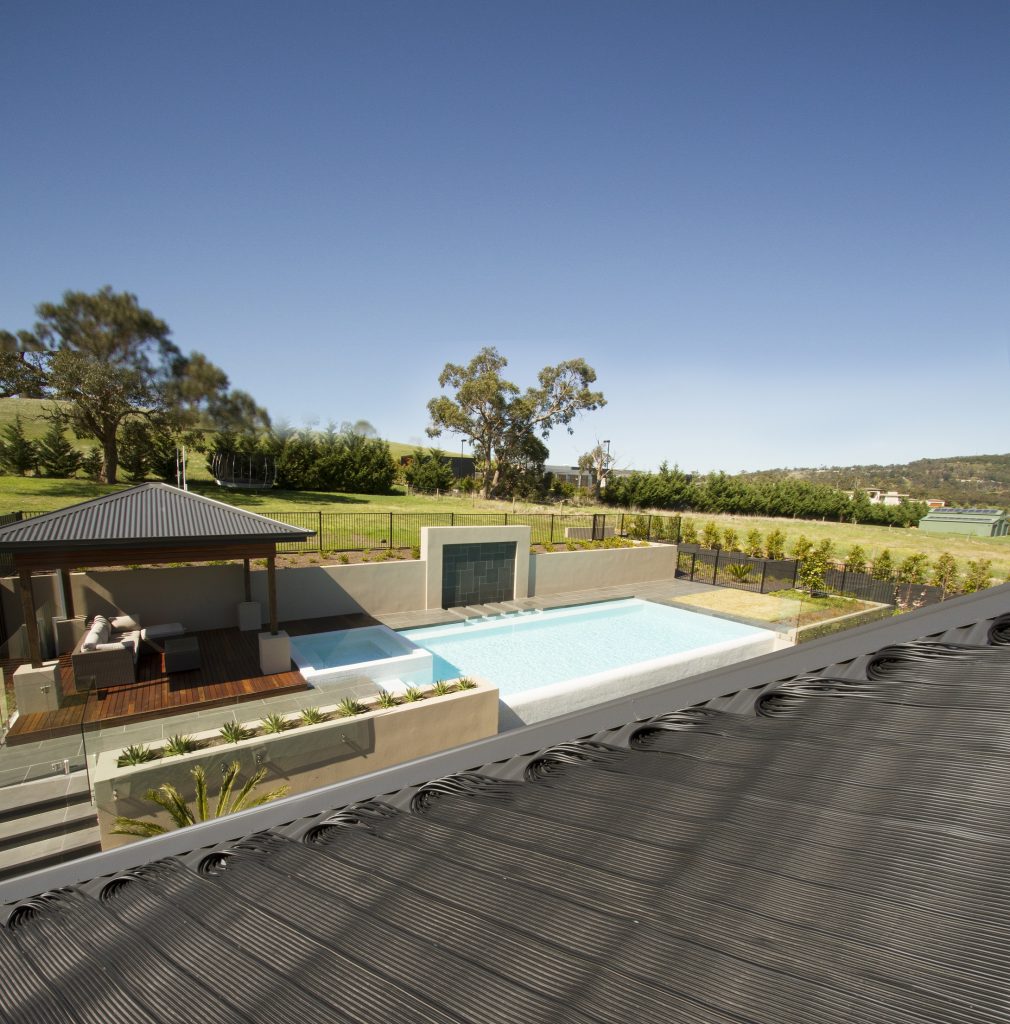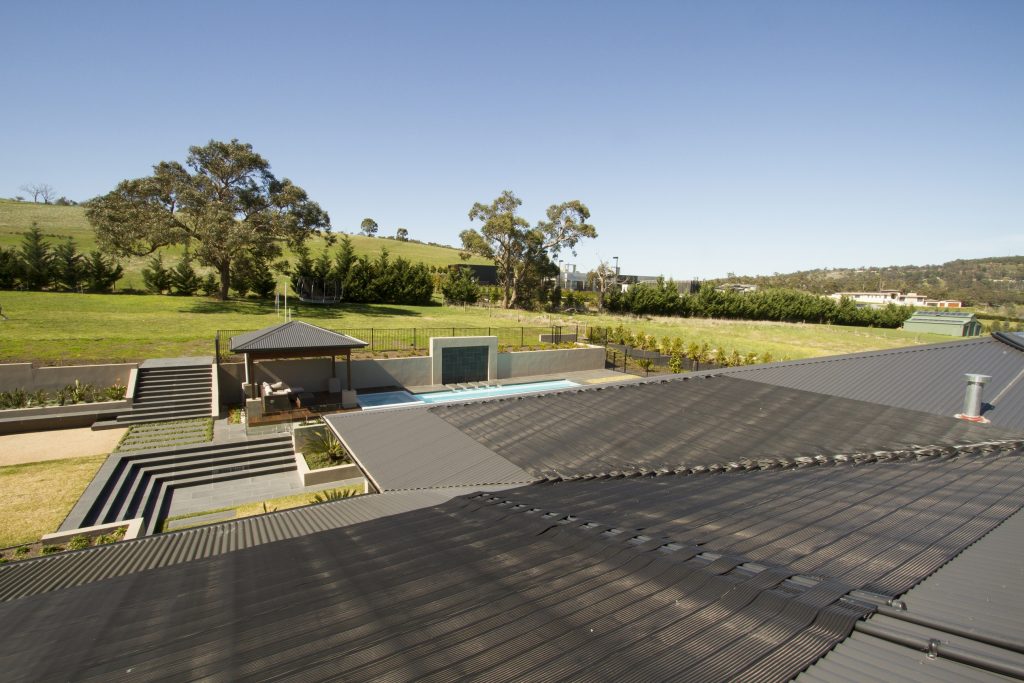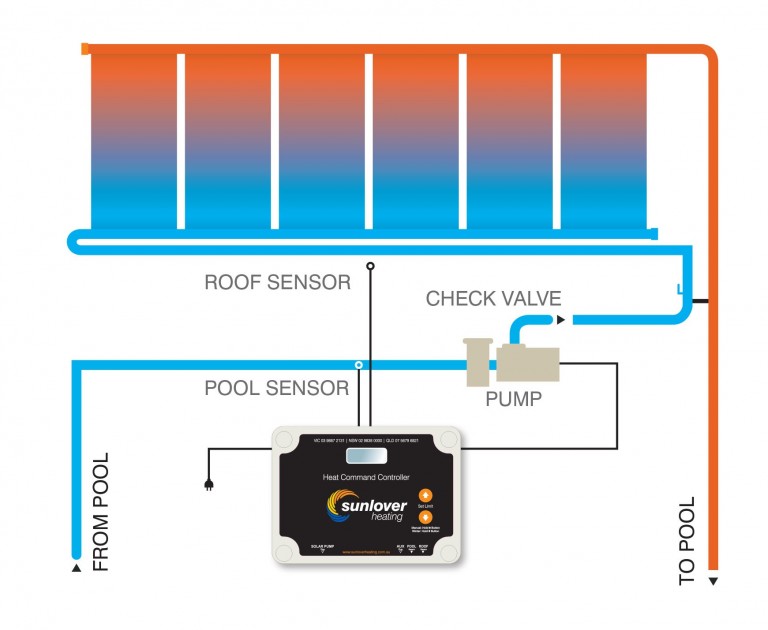“I’m Building a New Fibreglass Pool on the Mornington Peninsula, and want to know is Solar Pool Heating worth it?”
Just because you live in Melbourne, doesn’t mean you can only swim in summer. There are multiple pool heating options available to extend your swimming season, no matter if you have a fibreglass pool shell or a concrete pool.
So why do we recommend solar heating? Not only is it better for the environment, but also it is affordable, reliable and it’s easy to look after.
What is solar heating?
Solar heating has been used for decades to naturally heat pools and provide electricity and water to people’s homes. It is a system that can be installed on new pools or existing pools to heat your pool water by using the rays from the sun instead of gas or electricity, to extend your Melbourne swimming season by a few months. For example, imagine swimming from September to April weather permitting of course. Warmer states such as QLD and NT can reach an extra 3 months either side of summer using solar heating.
Your local concrete or fibreglass pool builder can easily install solar pool heating within a few hours, and unlike some other forms of pool heating, you will not require any other trades to help with installation.
How does solar heating work?
Solar heating isn’t drastically different to how your other pool equipment works. The cold pool water gets pumped from your pool through the filter and into a solar collector, which gets heated from the sun’s rays. The solar collector could be either of the following types of solar:
- Rigid Solar Heating:
This type of solar heating is more durable than the alternative. It is made from polypropylene and is normally in the form of panels that you may have seen installed on a roof. This is often the best choice for steep rooves, areas prone to storms and hail as well as regions like Outer South East Melbourne where there are likely to be issues with cockatoos.
- Strip Solar Heating:
The most commonly used system that has been used for decades. This system is usually comprised of a set of rubber or plastic tubes, and is flexible so it is perfect for installations around existing obstructions such as sky lights.
No matter the type of solar heating that is installed, once the water has been heated it returns to the pool via a series of pipes. Most pool solar heating systems nowadays include an automatic controller to divert the pool water through the collectors when the pool requires heating, so you don’t need to worry! You set your desired temperature and let the system take care of it for you.
What are the benefits of solar heating?
Environment:
When installed by a professional pool builder, solar heating systems can reduce greenhouse gas emissions and pollutants, when compared to heat pumps and gas heaters. Instead of sourcing its energy from power or gas, it chooses the sun- a natural and renewable energy source.
Our supplier, Sunlover, states that:
“There is evidence to suggest that to achieve the same benefits as are produced by one watt of energy from a solar panel system, one would need to burn 68 kilos of coal, release 136 kilos of carbon dioxide into the environment, or use a whopping 397 litres of water. If you want to do your bit to protect the environment for many years to come, solar is a wonderful option”.
Cost:
The cost of your solar heating system can range from $3,000- $6,000 installed… However you will save this much within only a few years of using the system when compared with the costs associated with a gas heater or heat pump, because the cost of the sun is free! Things to keep in mind when purchasing a solar heating system include:
- Installation costs can usually be anywhere from 15-30% of the cost of the system itself, so be sure to ask your pool builder for the break down. Be aware that you don’t need any other trades like plumbers, refrigeration mechanics or electricians to help install the system, so if you do choose to implement a gas heater or heat pump, check with your pool builder to see if other trades are required for installation, and if so, ensure they are included in the quotation if you are comparing costs
- The size of the pool will determine the size of the collector area required. The larger the collector area, the more costs endured
- 2 storey homes generally have higher costs associated with the system itself and installation
- The shading on your pool and your roof can also increase the collector area, therefore increasing the cost
- Colours other than black require a larger collector area so the cost will be higher
Appearance:
Due to their shape, solar panels and pipes can be implemented in a way that is unobtrusive.
You don’t need a lot of space like you would a gas heater or heat pump, and it can be installed simply as an extension of your existing residence. You can even choose the colour and type.
Keep in mind that black works best as it absorbs the highest amount of sunrays.
Maintenance:
Solar pool heating is extremely reliable. There are less moving parts involved in a solar system than a heat pump or gas heater, so you don’t need to worry about corrosion, rust or motors or fans breaking down.
When choosing solar heating products, simply ensure you select a system that is specifically designed for the Melbourne weather and flying friends. Also keep in mind that if you choose solar heating without a controller, you will need to make sure you run it for approximately an hour each day to flush it out. If it has a controller you can set it up to do it for you.
When is solar pool heating not enough?
Solar heating should not be relied upon to create a warm pool 365 days of the year. On average it will heat your pool between 5-15 degrees warmer than the existing pool water temperature, which means it is not much help in winter.
Different factors may determine how much warmer solar can make your pool, including the size of the solar collectors, the orientation of your roof, and the amount of shade impacting both the pool and roof of your home. If you are building a new pool, your local Melbourne Pool Builder should be able to judge this before your pool construction begins with a simple site visit.
If you are on the Mornington Peninsula and want to swim all year round, your best option would be installing a heat pump. It is also an option to combine solar heating with a gas heater or heat pump to minimise the usage of gas or power. Essentially our pool installers can set up your solar system to employ the assistance of a gas heater or heat pump on a need only basis, when the desired temperature is not reached via the solar collectors.
What brand do we recommend for solar heating?
At Master Pools our preferred supplier of all things solar is Sunlover Heating, based locally in the South East Suburbs of Melbourne. Sunlover provide state of the art, reliable technology, with 15 year warranties on the collectors. You can learn more about Sunlover Heating here, or you can contact us to make an appointment to visit one of our friendly pool builders at our Master Pools Display Centre in Cranbourne West so we can show you the range today.
To summarise, if you already own a pool, or are building a pool in Bayside Melbourne, Mornington Peninsula or other South East Suburbs of Melbourne and are looking to extend your swimming season by a couple of months either side of summer, solar heating is worth it, delivering a perfectly reliable and affordable environmentally friendly option.




